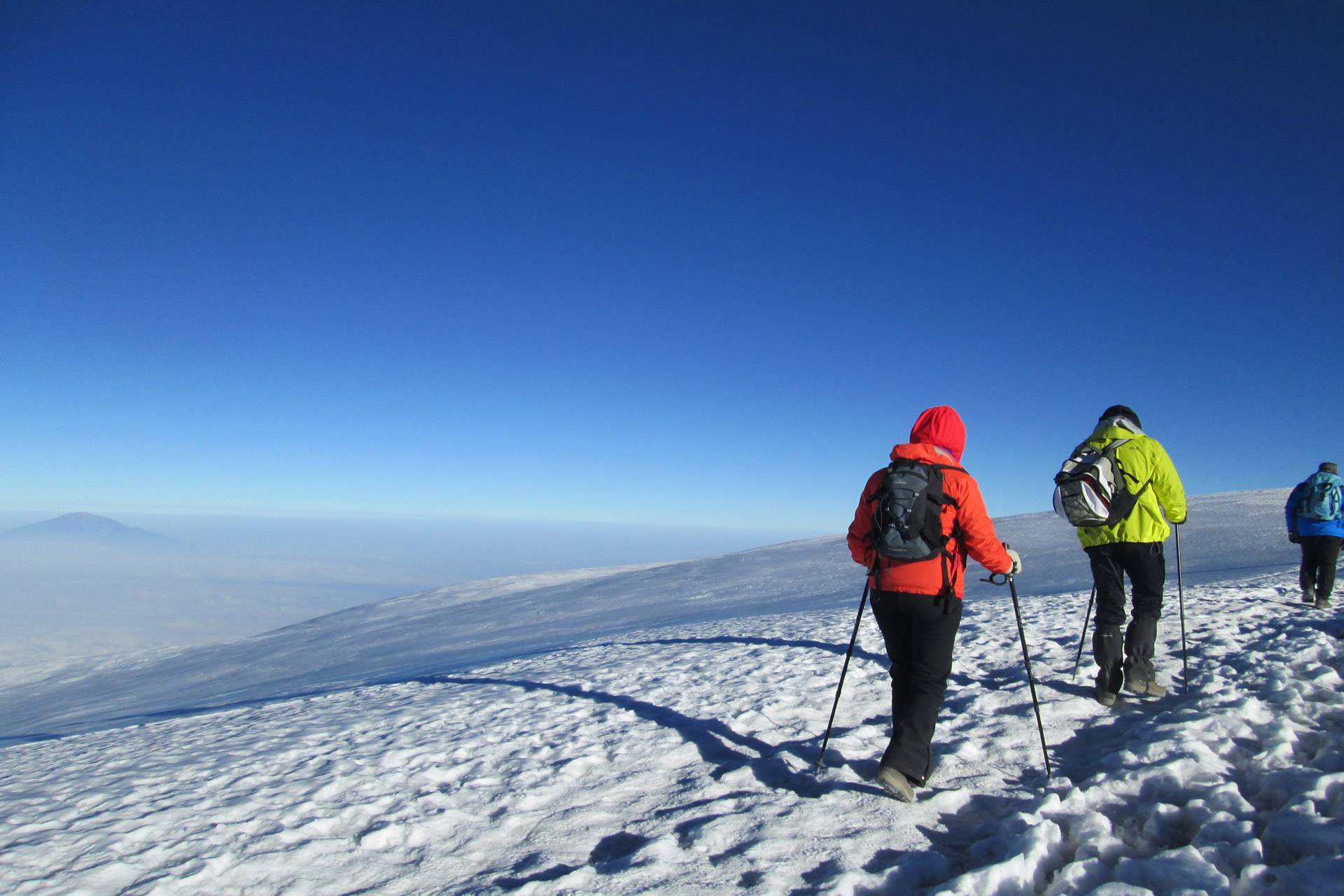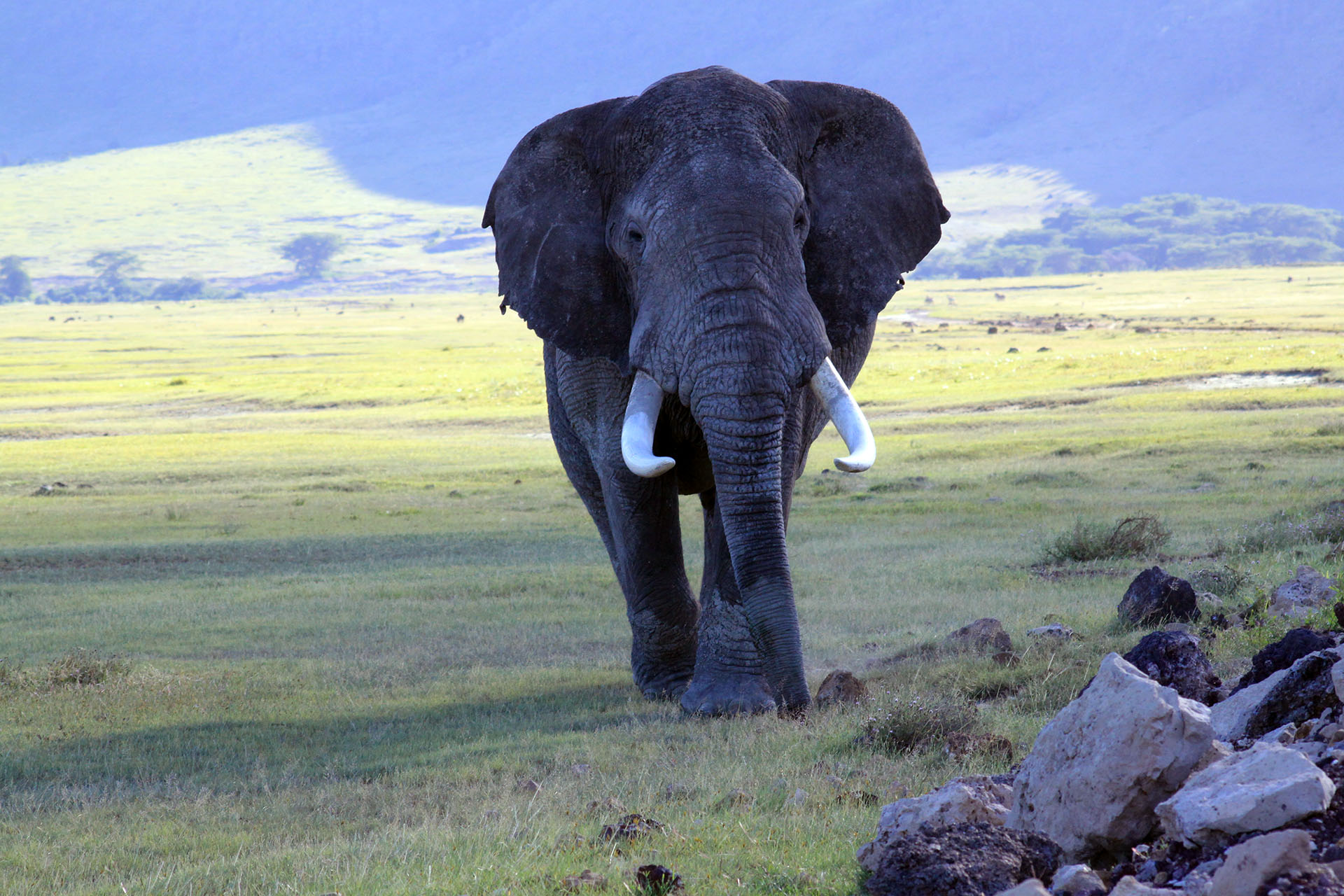
Mount Kilimanjaro Summit Preparation
Preparing for summit
When you arrive at Barafu Camp, the priority is to rest and prepare for the challenging summit ahead. After an early dinner, you’ll head to your tent, though sleep may be difficult due to the high altitude and anticipation. Make sure to pack your daypack as soon as you arrive, as you’ll be woken at around 11 pm with a hot drink before setting off at midnight.
Smart Tips for a Successful Summit
Summit night requires careful preparation. Managing your body temperature is essential—stay slightly cool while walking but layer up the moment you stop to conserve energy. Eating and drinking enough is also crucial, as you’ll be trekking for 13–15 hours and may burn over 4,000 calories. Carry snacks you enjoy, like trail mix, nuts, fruits, cookies, or energy bars to keep your energy up throughout the climb.
During short “maintenance stops,” make the most of your time: adjust clothing, hydrate, snack, and stay warm. These moments are not rest breaks but vital opportunities to prepare for the next stage of the climb.
Reaching the Roof of Africa
Your guides will set a steady, manageable pace to help avoid altitude sickness and keep you moving. Step by step, you’ll trek through the night until sunrise reveals the crater rim, with stunning views over Mawenzi and the glaciers below. From there, it’s another 1–2 hours to Uhuru Peak—the Roof of Africa at 19,341 ft (5,895 m). At this altitude, night temperatures can drop as low as -29°C, so being well-equipped is essential.
The Descent Back Down
After celebrating your achievement and taking memorable photos at the summit, the descent begins. It can be tough on the knees, so trekking poles or a knee brace are recommended. You’ll return to Barafu Camp for lunch before continuing to your final overnight stop. Tired but exhilarated, you’ll finally enjoy a well-earned rest.
The following morning, a 3–4 hour trek through the forest brings you back to the trailhead, where transport will be waiting to take you to your hotel for a comfortable recovery.
Why Book With
VELAM TOURS & SAFARIS
- Trust And Safety
- Best Price Guarantee
- Smart Planning
- Licensed Operator
Book with Confidence, Travel with Experts
Booking your safari with Velam Tours & Safaris means traveling with a trusted partner who knows Tanzania inside and out. We combine local expertise, professional guides, and carefully planned itineraries to give you a smooth and memorable safari experience. With us, you don’t just see Tanzania – you feel it, through authentic encounters, comfortable stays, and personalized service that puts your needs first.
Our Tours in Tanzania
Discover Adventures Designed for Every Traveler
At Velam Tours & Safaris, we invite you to explore our top tours offered in Tanzania. From unforgettable wildlife safaris and mountain hiking adventures to cultural experiences and relaxing beach holidays, each journey is designed to give you the perfect balance of adventure, comfort, and discovery.
Testimonies
Words From Our Happy Clients
We have been receiving reviews from our served clients and We are rated 5/5 by customers. This honor is given to us by customers because we always remain committed to all our customers to do whatever is needed by them to make their safari fully satisfied.
Posted onVerified Incredible Safari Expereince We had the most incredible 7-day custom safari with Velam Safaris through the Serengeti and Northern Tanzania. From the very beginning, Adam and the entire Velam team went above and beyond to make our trip special. They carefully crafted the perfect itinerary based on our interests and desires, ensuring every detail was thought through.One of the highlights was having a professional photographer join us, capturing every moment so we could fully immerse ourselves in the experience. The team’s knowledge of the wildlife, landscapes, and local culture was outstanding, and everything about the trip felt seamless and well-coordinated.The accommodations and food throughout the journey were exceptional, making each day feel both adventurous and comfortable.We can’t recommend Velam Safaris highly enough. If you’re considering a safari in Tanzania, they will make your experience special.Posted onVerified Valence, Outstanding Safari Guide! We had the pleasure and honor of having Valence as our safari guide for seven days in Tanzania this August. This was my first safari and my husband’s fifth, and Valence was by far the most knowledgeable guide we have ever had. With over 12 years of experience, he was professional, full of energy, and always checking in on us with his friendly “Are you good?” He helped us spot an incredible range of wildlife, from zebras and giraffes to lions and cheetahs, and he seemed to know the habits of almost every plant and animal. He could even anticipate animal behavior, from predicting where a leopard would move during a hunt to finding the perfect spot for the wildebeest crossing in the Mara River. He even bought us some roasted bananas to try since we were curious about local cuisine, which made the experience feel even more authentic and special. We also ran into some car issues during the trip, which is quite common on safari, but Valence quickly identified the problem on the spot. As an experienced mechanic, he made the repairs at a nearby town without disrupting our itinerary much. Every day with him felt like a fascinating biology lesson, and thanks to Valence, our safari was both unforgettable and in the best of hands. We would highly recommend him to anyone planning a safari!Posted onVerified Best Guide - Valence: The Driver Who Made Our Tanzania Safari Unforgettable – Big Five, Perfect Views & Hakuna Matata In Tanzania, your driver is everything — guide, protector, storyteller. We were lucky to have Valence, with 12+ years of experience and a heart of gold. He showed us all the Big Five, river crossings, even lions hunting. He knew every road, avoided dust and breakdowns, and always found the perfect viewing spots. “Hakuna Matata,” he’d say, and we believed it. From day one he called us family — and treated us like it.Posted onVerified Felt like home in the midst of the jungle Being Single ladies we were taken care of so much and we felt so safe in the midst of the jungle with barely any network. Safari experience was smooth and so surprisingly magnificent.Adam who crafted our tour itinerary was in touch from day 1 till we landed back . Lolo and Lawrence our guides were nothing less than family :)Posted onVerified Exceptional Safari Experience! Velam Safaris delivered an outstanding safari adventure! From seamless communication to expert-guided game drives, every moment was exceptional. Luxurious accommodations, attentive staff, and a commitment to sustainability set them apart. Highly recommend for an unforgettable safari experience!Posted onVerified Unforgettable Trip - Organized by Adam This trip was absolutely incredible! A huge thanks to Adam for organizing everything so flawlessly. From the very beginning, Adam was incredibly helpful and responsive, answering all my questions and making sure everything was perfectly tailored to our interests.Posted onVerified Exceptional 5-Day Safari with Velam Safaris Velam Safaris provided an outstanding 5-day safari experience. Our knowledgeable guide made every moment memorable with incredible wildlife sightings and insightful commentary. The accommodations were luxurious, and the opportunity to connect with local communities added depth to the journey. Highly recommended for an unforgettable adventure in the heart of Africa.Posted onVerified A Fantastic Adventure with Velam Safaris: My 5-Day Tanzania Safari Review I went on a safari trip with Velam Safaris in Tanzania for 5 days, and it was amazing. Everything was well planned, and the trip was fantastic from start to finish.The best part was seeing all the animals. Our guide took us on drives through Serengeti National Park and Ngorongoro Conservation Area. We saw lions, elephants, rhinos, and many other animals in their natural homes. It was so cool to be up close to them.Our places to stay were really nice too. We stayed in comfy tents and cozy lodges. Waking up to the sounds of animals and eating tasty meals outside was so nice.What I liked most about Velam Safaris is that they care about the environment. Our guide talked about why it's important to protect nature, and I thought that was great.Overall, I had an awesome time with Velam Safaris. If you want to go on a safari in Tanzania, I definitely recommend them. Thanks, Velam Safaris, for an unforgettable adventure!Verified by TrustindexTrustindex verified badge is the Universal Symbol of Trust. Only the greatest companies can get the verified badge who has a review score above 4.5, based on customer reviews over the past 12 months. Read more



